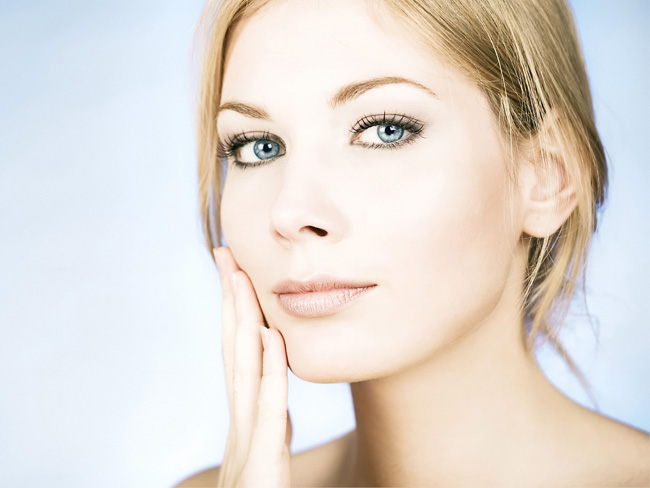Types of Skin

Determine the type of your skin and read useful tips for caring for different skin types.
What is the type of skin?
The type of skin of each person is strictly individual and represents a combination of three factors:
- The water content, which is responsible for healthy appearance and comfortable skin condition;
- The content of lipids, which regulate the softness and nourishment of the skin;
- The level of skin sensitivity, which is determined by the resistance and vulnerability of the skin.
Depending on the combination of these three factors, we distinguish the following skin types:
Very dry skin
The drier skin may be rough and flaky.
On the outer layer, many wounds are often formed, most often on the hands, armpits and legs.
Conditions for very dry skin: genetic or hormonal aging, as well as acute climatic conditions - strong wind or ultraviolet rays.
Indicative signs: almost invisible pores, matte color with reddish spots.
Dry skin
This skin is mostly normal, but periodically there is dryness and vulnerability.
When she is exposed to adverse weatherconditions (strong sunlight, very low or high temperatures, treatment with unsuitable medications), it becomes dry and irritable. Due to the influence of the environment, dryness and peeling usually appear on the skin. In some people, dry skin can be hereditary. It does not itch, but often on the skin there is peeling, even small wounds, which leads to discomfort.
Conditions for dry skin: genetic or hormonal aging, external factors - wind and ultraviolet rays.
Indicative signs: almost invisible pores, matte skin with reddish spots.
Normal Skin
Normal skin contains an optimally balanced amount of water and lipids. It is characterized by moderate sensitivity.
Conditions for normal skin: an ideal balance between the rate of growth and the exchange of skin cells.
Indicative signs: almost invisible pores and uniform pink skin color.
Combined skin
If your skin is fatter on the forehead and chin, than on the cheeks and around the eyes, you have combination skin.
The degree of fatness or dryness can vary depending on the season (the skin is usually drier, when it is cold). Even oily skin can coarsen and inflame in winter.
Conditions for combination skin: an imbalance in the formation and distribution of lipids, which depends on hormonal or genetic characteristics.
Indicative signs: enlarged pores, often greasy or with black specks, especially in the T-zone. The skin is either very dry or too oily, with frequent irritations on the cheeks.
Oily skin
Fatiness of the skin can vary on different days, independing on the sun, wind, season and time in general. Fat cells form too many lipids. The skin is shiny, dense and often has a waxy shade. Touching oily skin can leave a greasy imprint on the fingers. Often chronically oily skin has wide pores, acne and other blemishes. It is predisposed to the appearance of black dots. In this type of skin, glands producing fatty secretions are hyperactive and form excess lipids. Lipids give a greasy shine to the skin. The pores are very enlarged and the skin has an unhealthy appearance.
Conditions for oily skin: hyperactivity of glands producing fatsecrets, during the onset of puberty or other hormonal imbalance, stress, antibiotics. Too high temperatures and humidity contribute to the appearance of oily skin.
Indicative signs: expanded pores, matte color, shiny skin, black dots and pimples.

Read more:

Lancome Gel for improving the structure of the skin (microdermabrasion)

Vichy Cellebiotic 60+

L "Oreal NutriSoft Milk for normal skin

Garnier Intensive Care Hand Cream for very dry skin

Garnier Intensive Care Hand care moisturizing cream for dry skin

Garnier Intensive Care Foot cream regenerating for dry skin

Mary Kay "Timevise" Essence, smoothing skin color

Yves Rocher Spa Vegetal Moisturizing Comfort Milk for Dry Skin

Vichy Neovadiol GF Restoration of the proportion of the face for normal and combination skin

Vichy Nutrilogie 1 Deep-care serum for dry skin

Vichy Nutrilogie 2 Deep effect cream for very dry skin

Vichy Neovadiol GF Restoration of skin density and face proportions - night

Vichy Oligo 25 Cream improving face for dry skin

Vichy Liftactiv CxP Anti-wrinkle cream for dry and very dry skin